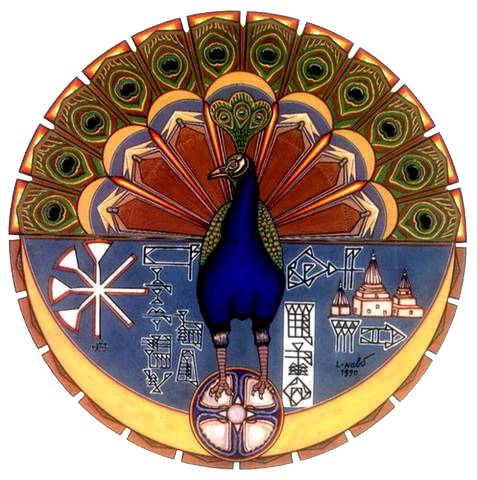[ by Charles Cameron — piecing together some background on a remarkable and requently misunderstood faith ]
.
**
Philip Kreyenbroek opens his book, Yezidism: its background, observances & textual tradition, with the words:
There is probably no factor that has influenced the perception of Yezidism, both in the Middle East and in the West, as much as the erroneous epithet “devil-worshipper”. In the past, when there was open hostility between the Muslim community and the Yezidis, the epithet probably did more than any theological debate to make it clear to all that the Yezidis were non-Muslims who were not entitled to any protection under Islamic Law. Moreover, it seemed to justify the severe ill-treatment to which they were regularly subjected.
Today, they are under threat of extinction by IS caliphate troops:
See also the final words of the Conflict Antiquities post, The Islamic State has not been able to destroy the Yezidi Shrine of Sherfedin.
**
Kreyenbroek continues:
For Western scholars, a genuine academic curiosity about the phenomenon of devil-worship may have been blended with a romantic interest in this secretive but cleanly and friendly group of Oriental ‘pagans’, whose strange cult might contain traces of one or more of the great ancient religions of the Middle East.
This is most unfortunate, since the first emanation from God and leader of the archangels, known to the Yezidis as the Peacock Angel, Melek Taus, (see illustration at the head of this post) resembles Iblis, the fallen archangel who refused to bow before Adam and was banished for his pride in Islamic teachings, but is entirely different from Iblis in that in Yezidi tradition his refusal to bow before Adam follows a divine command and carries no negative connotation. Evil, in Yezidi culture, comes not from the Peacock Angel but from choices made in the hearts of humankind.
**
My own special interest is in the varieties of end times theology.
Yezidi eschatology features both a Mehdi, or end times savior identified with the angel Sherfedin, and a Tercal, his “evil opponent” — compare the Dajjal in Islam — described in the Yezidi Qewle Tercal or Hymn of the False Saviour on p. 364 of Philip Kreyenbroek & Khalil J. Rashow, God and Sheikh Adi are perfect: sacred poems and religious narratives from the Yezidi tradition.
Other striking features of Yezidi end times belief include a forty year Sultanate of Jesus in Egypt followed by his death with the Mehdi Sherfedin at Mount Qaf (the earth’s farthest point, beyond which is the realm of the imaginal in Henry Corbin‘s exposition of Iranian sufism), subsequent reigns of Hajuj and Majuj (better known to Bible readers as Gog and Magog), and the purification of the earth by al-Hallaj (the renowned Sufi martyr and subject of Louis Massignon‘s great 3-volume opus) — after which the world will be “smooth as an egg” (Kreyenbroek and Rashow, p 365).
FWIW< the YezidiTruth site contains this much simpler preduction:
Yezidi prophecy maintains that Tawsi Melek will come back to Earth as a peacock or rainbow during a time of intense conflict, poverty, famine and distress on the Earth. He will then transmit some prayers to a holy man, probably a Faqir, who will then take them around the Earth and give them to representatives of all religions
**
I’d have run across the Yezidis in Idries Shah‘s book, The Sufis, which I first read in the early 60s, but it was a 2003 article, Ancient religion is on the side of the angels, that made me curious about them, and only the tragic events of the last few days that have finally sent me searching for in-depth materials on this, one of the ealiest known religious traditions, influenced by Sufism yet predating Zoroastrianism, Christianity and Islam alike…
Kreyenbroek’s two books and Christine Allison‘s The Yezidi Oral Tradition in Iraqi Kurdistan — all hideously expensive — are now on my reading list, and for updates on the situation, I’m following Kreyenbroek @Philipgerrit and Chicago’s Matthew Barber, @Matthew__Barber, reporting from near Mosul, on Twitter.
Perhaps the most striking thing about Yezidism is that it is an essentially oral religion, and thus lacks the central doctrinal authority of a scripture and allows for wide individual divergences in interpretation — fascinating, from the POV of scholars accustomed to scripture-based religions — but I need to dig deeper into Kreyenbroek before saying much more.
I’d welcome additional pointers — historical, theological, and contemporary.



